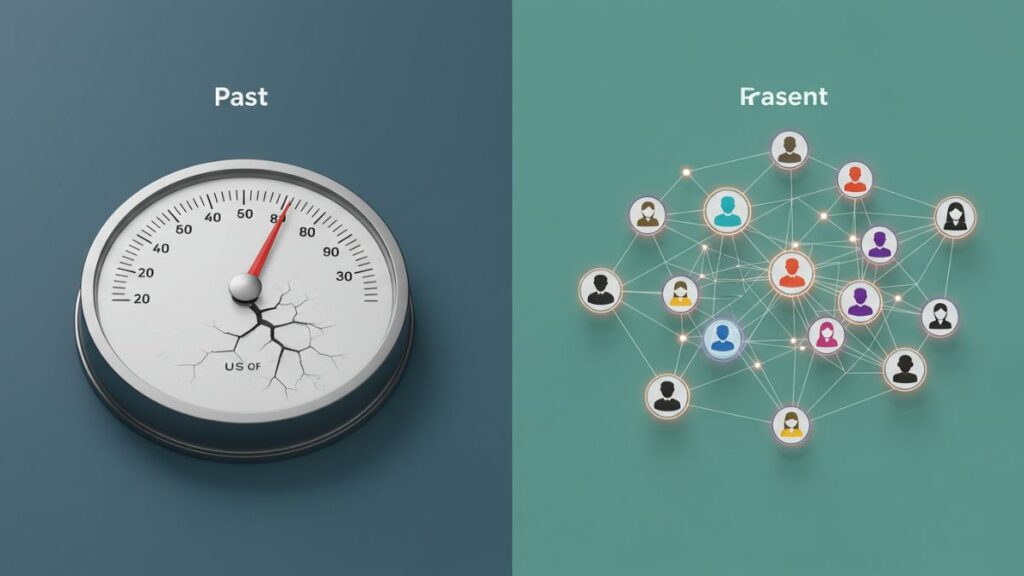Enter raterpoint a groundbreaking tool designed to revolutionize the way we assess and enhance user experience. Gone are the days of relying solely on surveys and metrics that offer limited insights. With Raterpoint, organizations can tap into real-time feedback that reflects actual user sentiments in a meaningful way. Whether you’re a UX designer, product manager, or just someone curious about enhancing digital experiences, this innovative platform promises to change the game entirely. Let’s dive into how Raterpoint is reshaping our approach to valuing user experience and why it should be on your radar now more than ever.
Traditional Methods of Measuring User Experience
Traditional methods of measuring user experience often rely on surveys and questionnaires. These tools aim to capture user satisfaction but can miss the nuances of real interactions.
Focus groups are another common approach, where a small group provides feedback on designs or prototypes. While this method offers insights, it may not represent the broader audience effectively.
Analytics tools measure engagement metrics like time spent on a page or click-through rates. However, they don’t reveal why users feel a certain way about their experiences.
User testing sessions allow for observation of actual behaviors, yet these can be costly and time-consuming. They require careful planning and may only happen occasionally during the design process.
These traditional methods have merit but also significant gaps that limit understanding of true user sentiment and behavior in dynamic environments.
The Limitations of Traditional Methods
Traditional methods of measuring user experience often rely on quantitative metrics like click-through rates and time spent on a page. While these figures provide some insight, they fall short in capturing the nuanced emotions users feel during their interactions.
Surveys and focus groups are another common approach. However, they suffer from biases such as leading questions or social desirability effects. Users might not express their true feelings, resulting in skewed data.
Moreover, traditional analytics tools can be limited in scope. They may track what users do but fail to explain why they behave that way. This lack of depth leaves designers guessing about user motivations and preferences.
Many conventional methods take considerable time to gather results. In an ever-evolving digital landscape, this lag can hinder timely adjustments needed for optimal user engagement. The need for more agile and comprehensive solutions is clear.
The Benefits of Using Raterpoint in UX Design
Raterpoint transforms the way designers approach user experience. By leveraging real-time feedback, it provides actionable insights that traditional methods often overlook.
This platform allows teams to gather qualitative and quantitative data simultaneously. With Raterpoint, designers can understand user sentiments more deeply than ever before.
Another major advantage is its adaptability. Whether you are working on a mobile app or a complex web interface, Raterpoint customizes its analytics to fit your specific project needs.
Collaboration becomes seamless as well. Designers can easily share findings with stakeholders, fostering an environment of continuous improvement and innovation in UX design.
Implementing Raterpoint not only streamlines the design process but also enhances overall user satisfaction by ensuring that products evolve based on genuine user experiences.
Case Studies of Successful Implementations of Raterpoint
One notable case is a leading e-commerce platform that struggled with user retention. By integrating Raterpoint, they gained real-time feedback on customer interactions. This allowed them to identify pain points quickly and adjust their interface accordingly.
Another example involves a mobile application for fitness tracking. After utilizing Raterpoint’s analytics, the team discovered that users were frustrated with navigation. They implemented changes based on these insights, resulting in a 30% increase in daily active users within just two months.
A financial services company also saw remarkable results by adopting Raterpoint. Their feedback loop helped streamline processes, enhancing customer satisfaction scores significantly after just three weeks of implementation.
These examples illustrate how diverse industries can harness Raterpoint to transform user experience effectively and efficiently, driving measurable improvements across platforms.
Conclusion:
Raterpoint is revolutionizing how we approach user experience. It offers a fresh perspective that traditional methods simply cannot match.
By focusing on real-time insights and user feedback, Raterpoint enables designers to make more informed decisions. This agility allows teams to adapt quickly, ensuring they meet users’ evolving needs effectively.
The success stories emerging from businesses that have integrated Raterpoint showcase its value. These organizations are not just improving UX; they’re enhancing customer loyalty and driving growth.
FAQ’S
What is Raterpoint?
Raterpoint is an innovative platform designed to enhance user experience by streamlining how feedback is collected and analyzed. It empowers businesses to gauge customer sentiments effectively, ensuring the design aligns with user needs.
How does Raterpoint differ from traditional UX measurement methods?
Traditional methods often rely on surveys or analytics that may not capture real-time emotions. Raterpoint uses advanced algorithms and AI-driven insights for a more dynamic understanding of user interactions.
Can I integrate Raterpoint into my existing systems?
Yes, Raterpoint offers seamless integration options with various platforms, making it easy for teams to incorporate it into their current processes without disrupting workflows.


